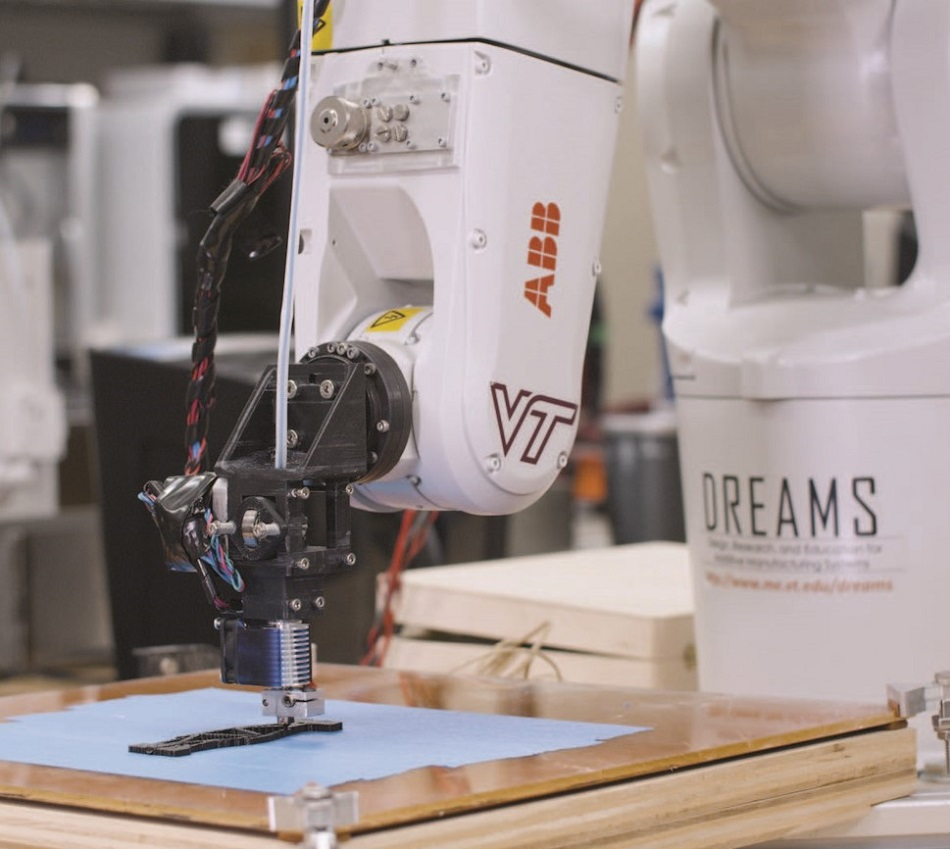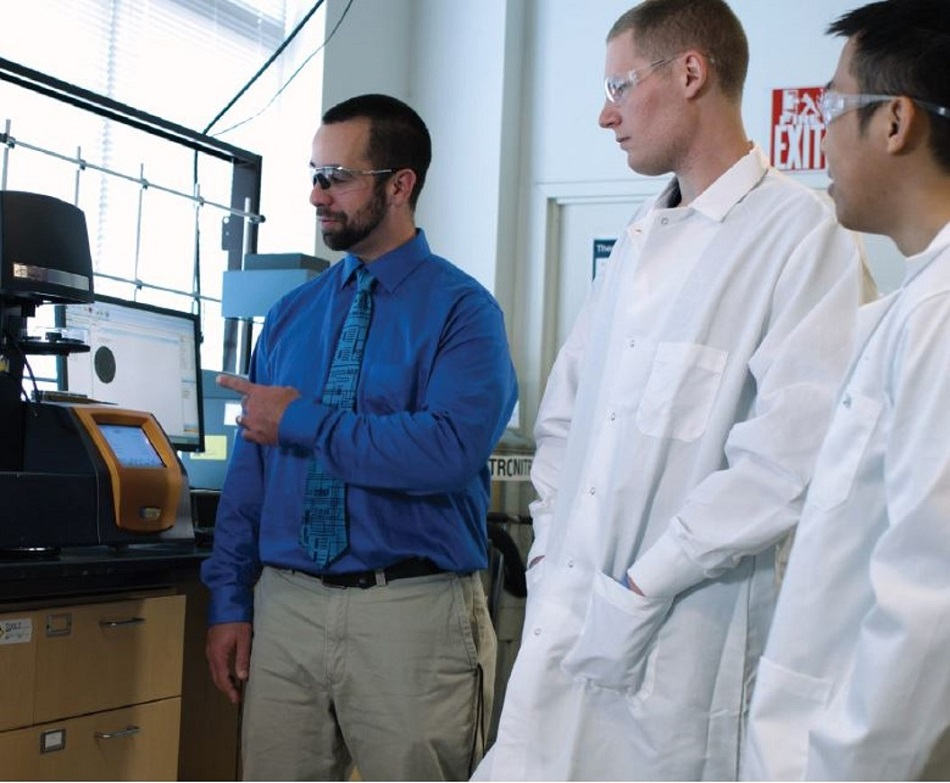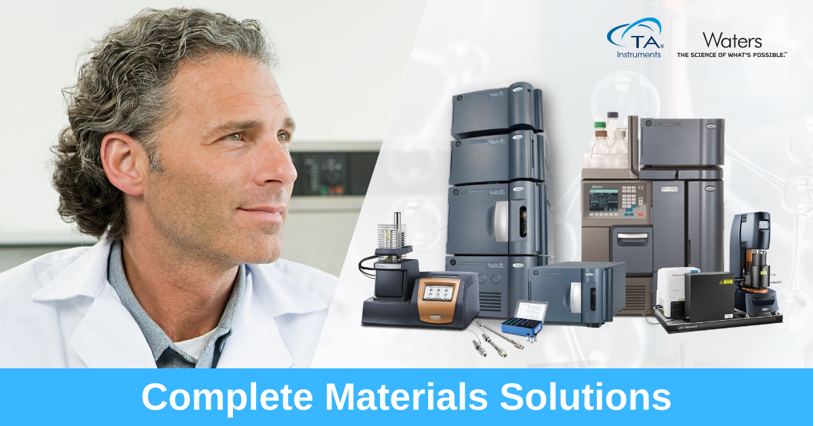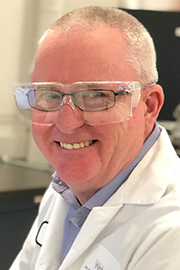
In this interview, AZoM spoke with Damian Morrison, Director, Material Sciences at Waters Corporation, about emerging trends in the materials industry and key benefits that collaboration and the combination of structure-property technologies play in driving innovation.
Tell me a bit about your background and why you decided to join Waters.
I joined the Waters team more than 20 years ago. In my current role as Director of Marketing, I lead a group of scientists and market development managers whose sole focus is on understanding and addressing the challenges researchers face across a gamut of industries in materials science research and development, processing, and manufacturing. Before Waters, I held a career in chemistry where I helped companies such as Merck Sharp and Dohme discover compounds for use in developing medicines, vaccines, and animal health products. Here at Waters, I leverage my previous experience almost daily in guiding the extended team in developing the solutions that help our customers succeed in both the lab and throughout the extended manufacturing value chain.
For me, joining Waters was a very important, yet simple decision. Keep in mind that I was on the other side in my previous career where Waters was one of the vendors that supported my work in the lab. For as far back as I can remember, working with Waters always felt more like a partnership than a vendor-customer transaction. While I was impressed with Waters as a vendor, I have been much more impressed as a Waters employee, experiencing that I was not just “lucky” in my engagement. The approach was intentional – it was just part of the Waters culture.
At Waters, enabling customer success is at the center of everything we do. Each instrument is designed to address industry-specific requirements and intense analytical challenges – materials sciences being a critical area of our focus. Waters’ scientific foundation is built upon rich collaborations with customers and technology partnerships with industry experts. Some of the first refractive index detectors and gel permeation chromatography (GPC) columns introduced into the marketplace in the 1960’s, for example, were a factor of very early collaborations between Waters and Dow Chemical.
Decisions and actions here are guided by two simple words – deliver benefit. Our founder, Jim Waters, coined these words in establishing a culture where we seek to positively impact our customers, employees, and society at every opportunity. Connecting everyone to a bigger cause by developing solutions that enable scientists to make the world a better place is one of the primary reasons why I decided to join Waters. I consider myself a proud member of the Waters team, working for a company and with colleagues who demonstrate an unwavering commitment to supporting strong customer experiences. I am quite honored to play a small role in bringing forward materials science innovations designed to make our world safer, more sustainable, and healthier.
What products do you make and what industries do they support?
Waters began as a small office in the basement of a police station in Framingham, MA, in 1958. Companies would contract Jim and his five employees to build one-of-a-kind instruments for various purposes. Early products included a boiler feedwater flame photometer, a balloon hydrometer, a nerve gas detector, a lab refractometer, and process control refractometers. The company’s offering continued to expand as it partnered with customers to understand bottlenecks and identify market opportunities, which ultimately led to the launch of its first gel permeation chromatograph instrument, the GPC 100, in 1963.
Since then, the company’s solutions have grown to include a range of characterization instruments including liquid chromatography, mass spectrometry, columns, software, and other supporting consumables. Waters technologies deliver innovative solutions for laboratory-dependent organizations across segments including materials sciences, pharmaceutical, health science, food, environmental testing, and government labs working in research and development, quality assurance, and a series of other laboratory-dependent applications.
In the mid-1990s Waters acquired two very important technology companies: MicroMass, for its mass spectrometry capabilities, and TA Instruments, which already held a leadership position in thermal analysis and rheology. The addition of these two organizations and the resulting combination of their distinct, yet complementary technologies specifically increased our capabilities to support researchers in the materials sciences industry.
Advancing Materials Sciences | TA Instruments and Waters Working Together to Aid in Advancement
To better address the growing needs of chemists and polymer scientists across applications, we have recently formally brought together the analytical chemical structure characterization capabilities of Waters using chromatography, chemistries, and informatics and combined it with the property testing expertise of our TA Instruments, which includes thermal analysis and rheology. We came to realize that by combining these technologies across the extended materials workflow, our ability to deliver more robust solutions into the materials space significantly increased. Simply put, our approach follows the adage that we get a lot further if we work together rather than trying to work independently.
Collectively, the combination of Waters and TA Instruments allows us to support the growing needs of materials scientists and chemists in their quest to fully understand the structure-property relationship between chemicals and polymers. That combination of understanding the chemical structure and how it translates into its resulting physical properties are foundational in our customers’ research.
It's that aggregate sum of our analytical tools and expertise in chromatography, mass spectrometry, thermal analysis and rheology that distinguishes us from other companies. I believe we have a unique and compelling value proposition to be able to support researchers from an all-encompassing technology and data perspective, across any product’s discovery-to-development-to-manufacture lifecycle.
What are the latest trends, challenges, and opportunities you see in the materials sciences industry?
In the field of materials sciences, an increasing focus around innovating higher-performing, more durable, more sustainable polymers has become a norm. As is the case, a detailed study of both the chemical structure of materials and their physical properties is required to support advancing research and development across segments that include Extractables and Leachables, Medical Devices, Energy and Lubricants, Electronics, and even Cosmetics and Personal Care.
Think about it. As consumers, most of us have an insatiable desire for the best performing products. Whether it’s the next generation mobile devices, for example, or the sharpest televisions, our lives are undeniably powered by polymers and materials science. Spanning beyond these most common products, materials scientists can be found working on life-changing products across a series of industries. In pharma, manufacturers are working on keeping us safe by identifying impurities during the production of drugs; in medical devices, scientists seek out new materials to create life-saving devices such as heart valves and stents; in the transportation industry, researchers are discovering new composites that enable better fuel efficiency and less pollution; those in other energy sectors are constantly conducting research on developing stronger and more sustainable materials to use in the manufacturing of adhesives and sealants, oil and gas, paints, inks, and coating. The list goes on…

Leveraging polymer research and additive manufacturing processes to enable the production of more sustainable products using 3D printing technology at Virginia Tech University.
Within each of these highly competitive environments or segments, researchers face tremendous challenges and opportunities. The pressure is high to bring new products to market faster, more efficiently, and more consistently. These requirements are driving opportunities to leverage better and more consistent analytical measurement tools that accelerate the insights that matter most when looking to achieve higher productivity and performance outcomes.
Typical product specifications are less central in the types of conversations we are having out in the field. From a product perspective, our customers want to know less about the technology and more about the benefits they can derive from it. While performance and accuracy are typically unspoken expectations, we are finding that our customers are also looking for products that are simpler to use and deploy within their laboratories. The need for data has also changed in the sense that data is no longer just a piece of data. It's more about capturing meaningful data and understanding what it means within both the context of the current experiment and how that specific piece of data can be used for future decision-making. To this end, researchers are being asked not only to collect but also to interpret the data they are generating into meaningful narratives that feed into the broader research.
Another significant trend we are seeing specifically in the research and development of new materials is around the topic of sustainability. For decades, sustainability has been a focus within the environmental community for its adverse impact on our natural resources, wildlife, and even causing harm to humans by finding its way into our food and water sources. At the root of it all; plastics – manmade polymers. According to the Ellen Macarthur Foundation, a whopping 86% of all plastic packaging is used only once before it is tossed into the trash. In order to curtail continued plastic pollution, organizations are seeking more sustainable raw materials such as cellulose and lignins. The goal here is to use organic raw materials in creating more biodegradable, less toxic, more renewable plastic products such as water bottles and packaging materials from the start, so there is less of an adverse impact on society.
However, the currently high costs associated with processing organic polymer substitutes make their adoption challenging for organizations looking to maximize profits. Even with this being the case, we are seeing that companies are in-fact increasing their commitment to research and development into sustainable polymer innovation through the allocation of dedicated scientific resources whose sole mission is to develop more eco-conscious polymers and processes.
How are you supporting researchers in addressing the challenges and opportunities they are faced with?
The nature of our collaborations best highlights our commitment to the materials industry, I feel. Through our collaborations, we’re not just supporting our industrial customers, we are also influencing the future of the science itself. The learnings we gather through our partnerships allow us to refine and even broaden our technologies to better support scientists in bringing tomorrow’s solutions to life. Waters is a learning organization, which means that we value the bi-lateral transfer of knowledge. This philosophy is best illustrated in our recent collaboration with Rowan University in Glassboro, New Jersey.
Rowan’s Sustainable Materials Research Lab (SMRL), part of the Henry M. Rowan College of Engineering, focuses its work on strategically looking at nature’s building blocks to determine if their inherent attributes or characteristics can be combined to make new, better, safer, and more environmentally conscience monomers and polymers.
Rowan, among other academic institutions, partners with federal agencies, government research labs, and industrial organizations in supporting their research and development efforts. And while the main mission of SMRL is to train the next generation of chemical engineers and scientists, they do so by directly involving them in real-life research projects. In the laboratory, students research and support projects that meet the critical needs of clients and partners, while at the same time they develop the hands-on skills they will require in their scientific careers. That includes a great deal of hands-on experience with both the instrumentation and techniques, as well as soft skills such as communication and presentations to SMRL’s partners and potential collaborators using data acquired through their research.
Waters and TA Instruments research tools were specifically chosen by Rowan because they provide the highest level of analysis, yet their ease-of-use makes them accessible to students. Access to research-grade analytics at an undergraduate level is a unique concept that was made possible by Waters' intentional simplification in using its instrumentation. In doing so, Waters integrated previous research and end-user feedback into their product development roadmap with the dual goal of supporting enhanced analytics and ease of use. The collaboration between Rowan University and Waters/TA Instruments presents a huge opportunity for students in their educational program by preparing them for the next stages in their careers in materials science.

Dr. Stanzione in the Sustainable Materials Research Laboratory, Rowan University, with SMRL Ph.D. students Tristan Bacha (middle) and John Chea (right).
Quite often, our collaborations lead to innovations of unique formulations that are worthy of intellectual property protection. In these cases, our clients benefit from securing a first-to-market advantage or at the very least, allowing them to significantly differentiate themselves in the marketplace. However, the work doesn’t end there for organizations taking products to market. Changes in raw material suppliers, variances in material purity, and even slight changes to manufacturing processes can lead to non-conforming products that can have a devastating impact on customer satisfaction and revenues.
That’s why it’s also critical to look at the other end of the spectrum in terms of having both the capabilities and know-how to analyze existing formulations used in the manufacturing of a finished product or component, for example. It is not uncommon, for the variety of reasons previously mentioned, to have a physical product suddenly stop performing the way it was intended. Under these circumstances, we have the collective instrumentation in our scientific “toolbox” to support our partners in both the development of the initial chemical formulations as well as in the deformulation of non-conforming products. And that’s where the synergies created by bringing together the Waters chromatography and mass spectrometry expertise with the robust performance of TA Instruments’ thermal analysis solutions becomes a huge asset to our partners.

Whether preparing students for the next stage in their materials science careers, helping industrial partners innovate new formulations or supporting manufacturers in finding solutions to non-conforming product, I believe that the collaborative approach that Waters applies in meeting customer needs through its combined portfolio, service set, and cross-application experience has effectively positioned the company as a valuable and committed partner.
What are your plans for the next year?
One aspect of Waters’ culture that has remained intact since its foundation is the belief that the best research occurs in collaborative environments. There is no doubt that researchers and organizations alike will continue to face challenges as they pursue innovating the materials solutions of the future. To that end, our commitment to collaborate with our partners across select applications will remain a key objective for the foreseeable future.
While we will continue to leverage our collaborative learnings as inputs in modifying existing products and in delivering new technologies that further serve the evolving needs of the materials industry, we will also explore additional acquisitions and strategic business partnerships that will expand our abilities to deliver high-value solutions to our customers.
From a Waters perspective, we are excited about the opportunity to continue partnering with scientists across industries and organizations in solving unique challenges and in helping to innovate tomorrow’s materials solutions. Personally, I can add that looking back at our success during the past year – the partnerships we have formed, the challenges we have helped our customers overcome, and the opportunities we are pursuing, paint a bright future filled with promise and innovation.
It’s an exciting time to be part of the materials science industry. It's very dynamic, fast-paced, and there is a lot of cool science happening out there.
About Damian Morrison
 Damian Morrison holds over 30 years of experience in chemical analysis of polymeric structures across a variety of applications. In his current role as Director of Material Sciences at Waters Corporation, Damian leads a group of scientists and market development managers on understanding and addressing the challenges researchers face across a broad range of industries in materials research and development, processing, and manufacturing. Before joining Waters, Damian focused his work on supporting companies such as Merck Sharp and Dohme in the discovery of compounds for use in developing medicines, vaccines, and animal health products.
Damian Morrison holds over 30 years of experience in chemical analysis of polymeric structures across a variety of applications. In his current role as Director of Material Sciences at Waters Corporation, Damian leads a group of scientists and market development managers on understanding and addressing the challenges researchers face across a broad range of industries in materials research and development, processing, and manufacturing. Before joining Waters, Damian focused his work on supporting companies such as Merck Sharp and Dohme in the discovery of compounds for use in developing medicines, vaccines, and animal health products.
Disclaimer: The views expressed here are those of the interviewee and do not necessarily represent the views of AZoM.com Limited (T/A) AZoNetwork, the owner and operator of this website. This disclaimer forms part of the Terms and Conditions of use of this website.